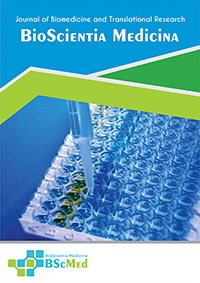Main Article Content
Abstract
Background: The morphological mimicry between nummular dermatitis (ND) and tinea corporis represents a significant source of diagnostic error in clinical practice. This convergence on a similar clinical phenotype—the annular plaque—often leads to inappropriate antifungal therapy and a protracted, debilitating course for the patient, as powerfully illustrated in this case.
Case presentation: We present the case of a 22-year-old female with a five-year history of chronic, recalcitrant, and intensely pruritic annular plaques on her lower legs, with a baseline pruritus score of 8/10 on a Visual Analog Scale (VAS). Previous treatments based on presumptive diagnoses, including potent topical corticosteroids and systemic antifungals, had failed. This report demonstrates a pivot from a morphology-based assessment to a multimodal diagnostic algorithm. The cornerstone of this shift was dermoscopy, which revealed patchy, irregularly distributed red dotted vessels—a classic signature of an eczematous process—and a notable absence of features suggestive of a dermatophyte infection. The diagnosis was confirmed by histopathology. A strong correlation between disease flares and psychosocial stressors was identified, and a holistic management plan targeting the cutaneous inflammation, the compromised skin barrier, and the neurogenic triggers led to a rapid and substantial improvement in her clinical status and quality of life, with the Dermatology Life Quality Index (DLQI) score decreasing from 9 to 3 and the pruritus VAS score dropping to 1/10.
Conclusion: This case argues for a revised diagnostic paradigm for chronic annular lesions, one that de-emphasizes ambiguous morphology and prioritizes the integration of a detailed psychodermatological history with in-vivo microscopic analysis via dermoscopy. This approach not only prevents therapeutic futility but also underscores that successful, long-term management of ND is contingent upon a patient-centered strategy that addresses the interconnectedness of the skin barrier, the immune system, and the psycho-neuro-cutaneous axis.
Keywords
Article Details
As our aim is to disseminate original research article, hence the publishing right is a necessary one. The publishing right is needed in order to reach the agreement between the author and publisher. As the journal is fully open access, the authors will sign an exclusive license agreement.
The authors have the right to:
- Share their article in the same ways permitted to third parties under the relevant user license.
- Retain copyright, patent, trademark and other intellectual property rights including research data.
- Proper attribution and credit for the published work.
For the open access article, the publisher is granted to the following right.
- The non-exclusive right to publish the article and grant right to others.
- For the published article, the publisher applied for the Creative Commons Attribution-NonCommercial-ShareAlike 4.0 International License.





